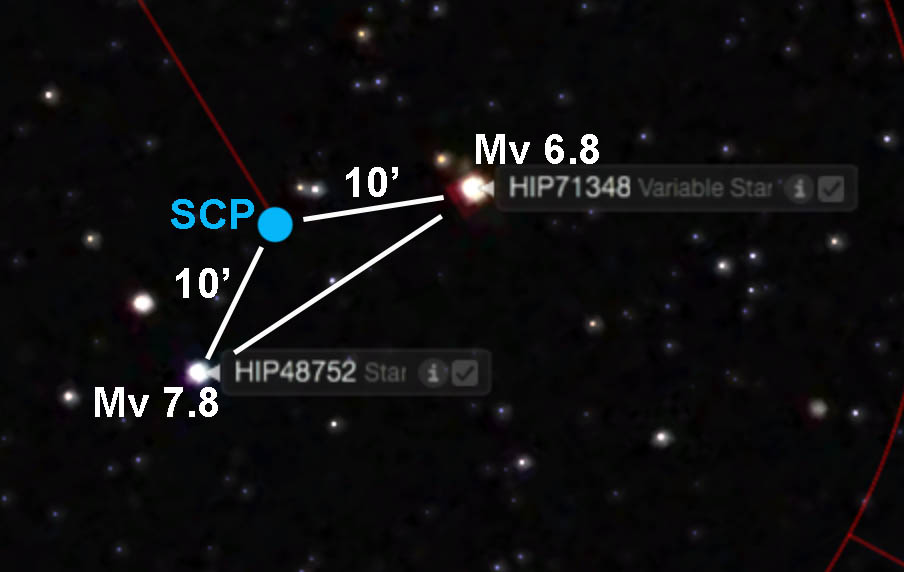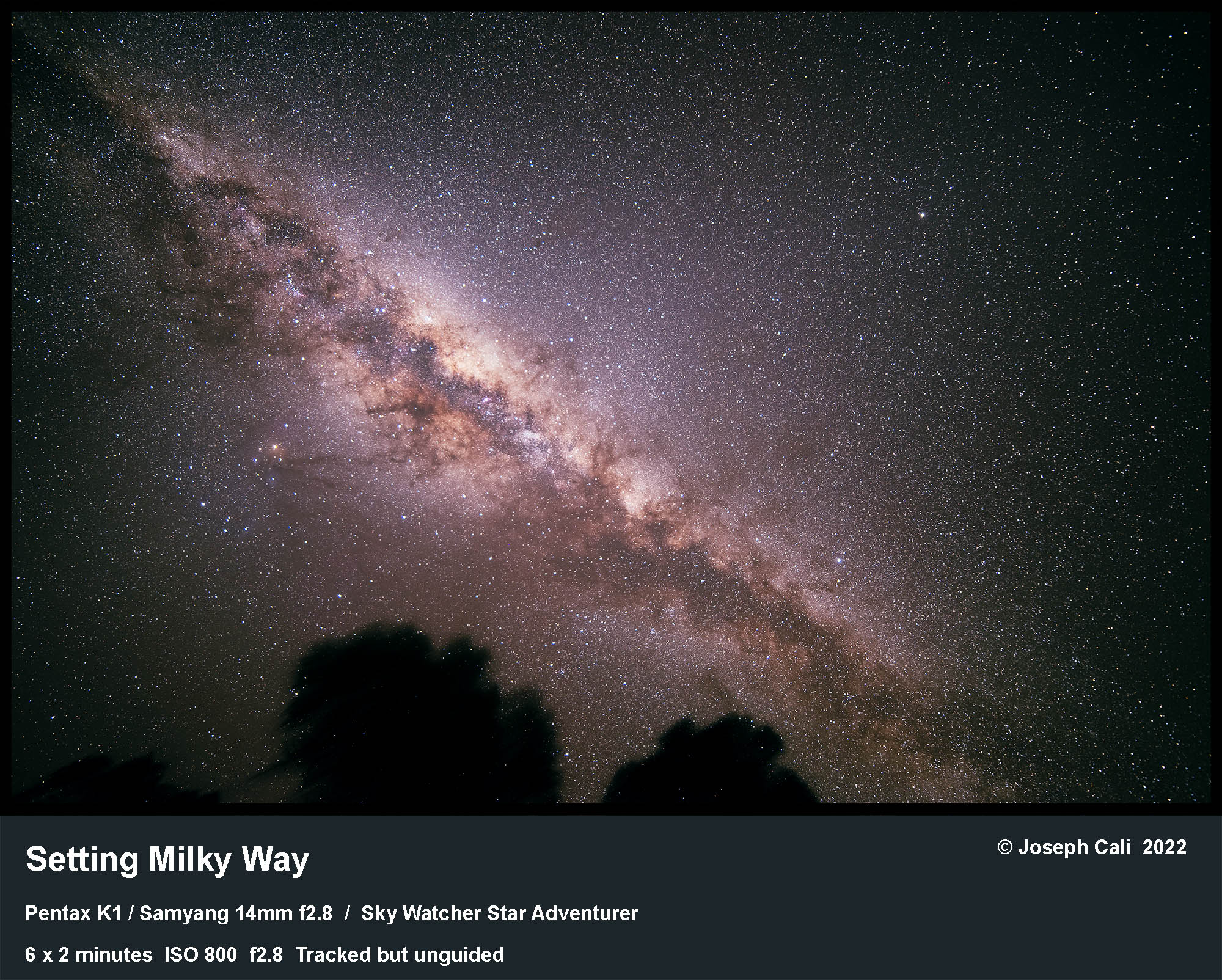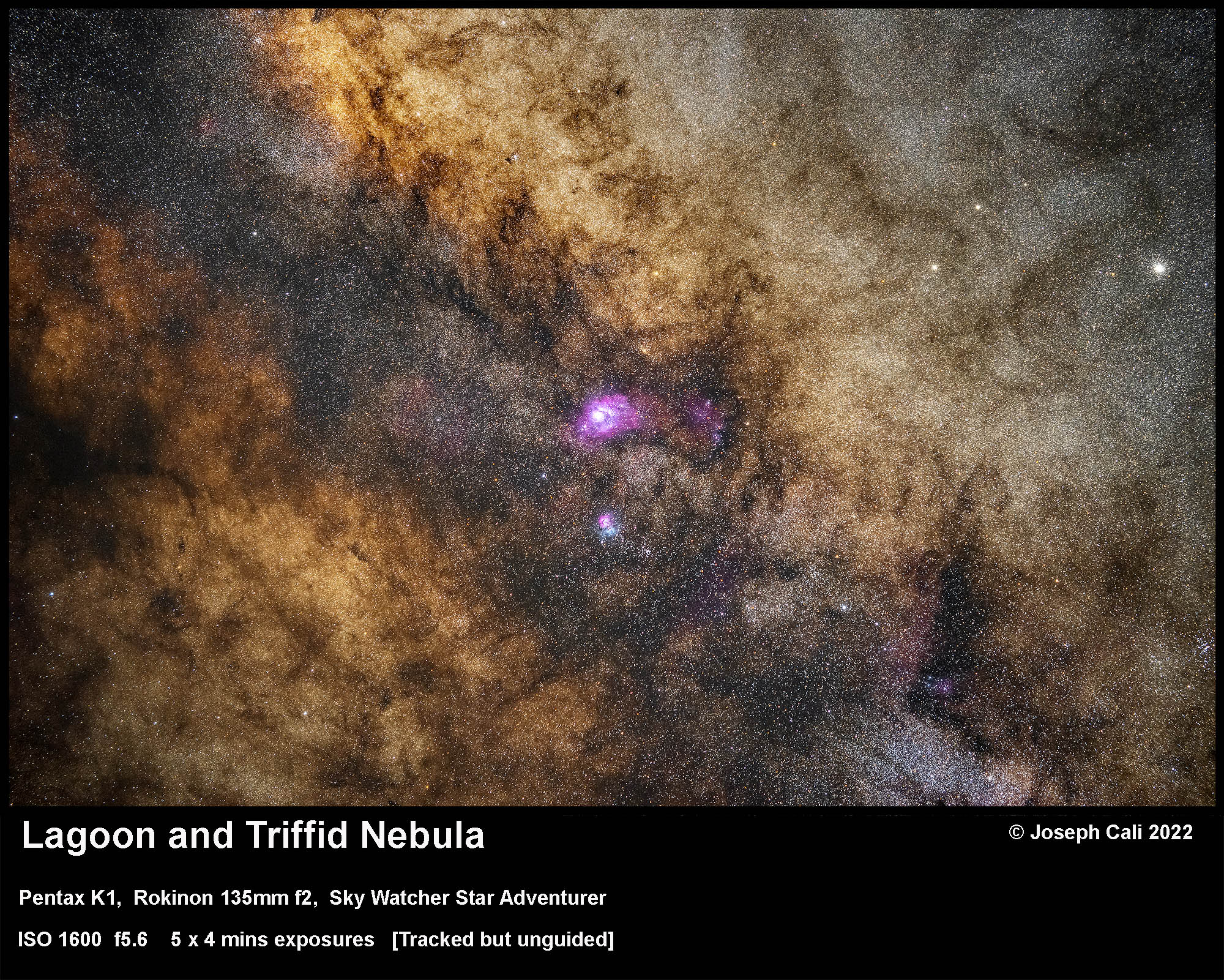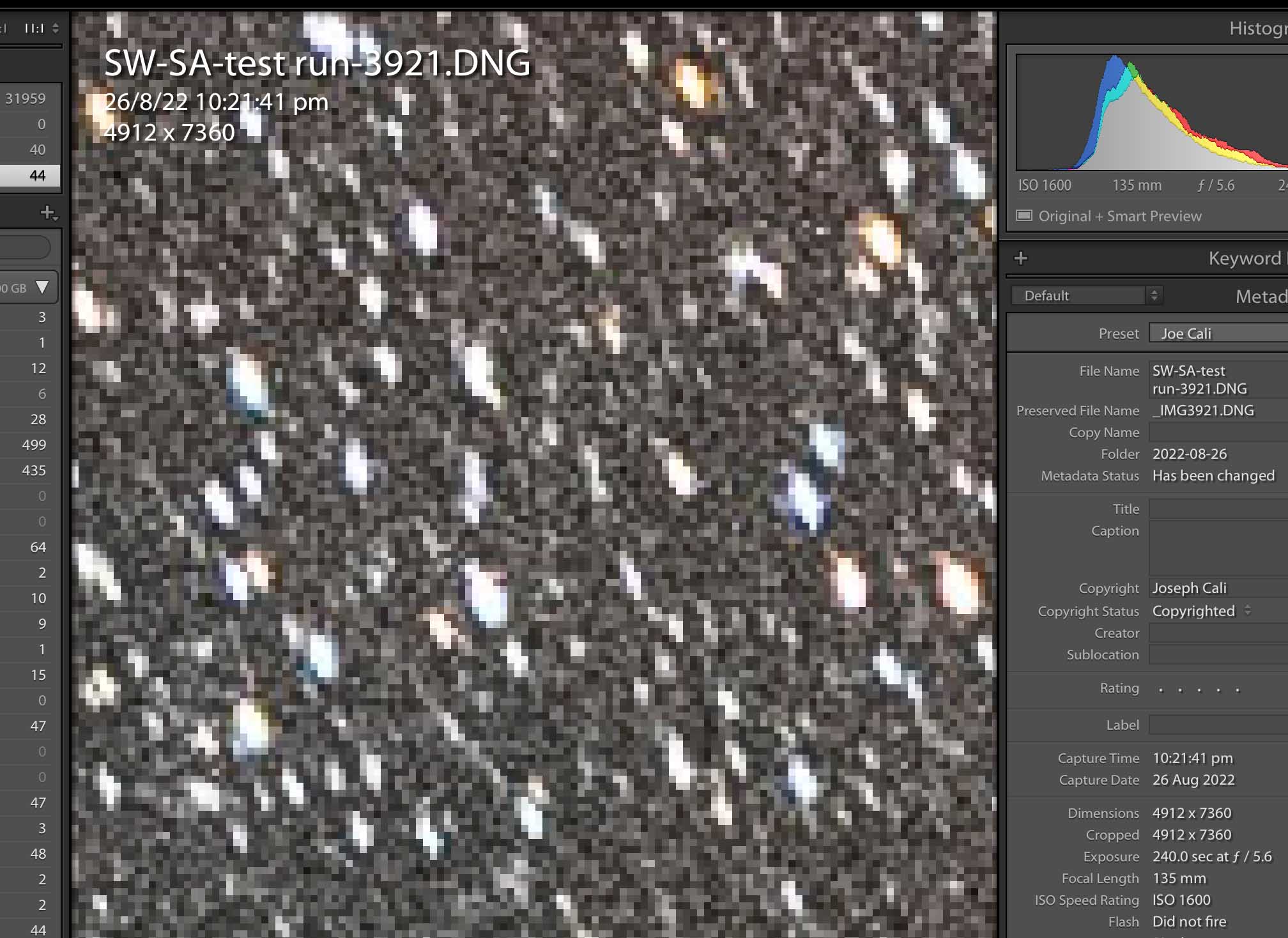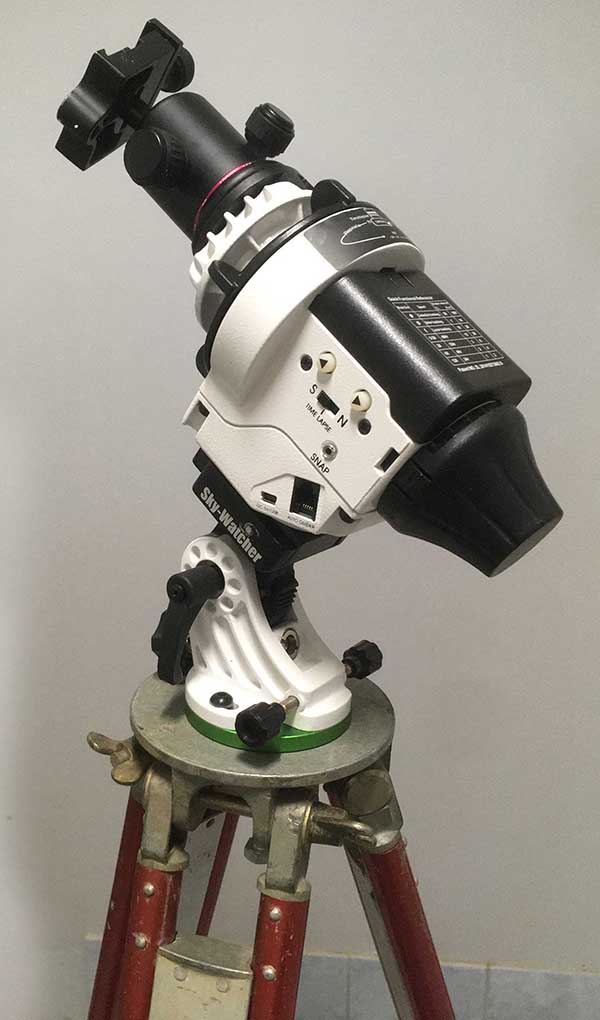 Setting up
Setting upI attached the altitude adjuster to a solid builder tripod. I have given this advice to many people in the past so I thought I should practise what I preach. It worked a treat and the setup was quite rigid.
Polar Alignment
The polar scope is optically not bad but as I had previously read and heard, the illumination is truly abyssmal. I might need to design and fabricate something better?
Nonetheless, I managed to put the polar axis close to spot on by using the 7th and 8th magnitude stars that are just a few minutes from the south pole. The "Trapezium Stars" are way out of the field of view of the diagram below. There was minimal declination drift on any of my test exposures, even those taken with a 135mm lens.
